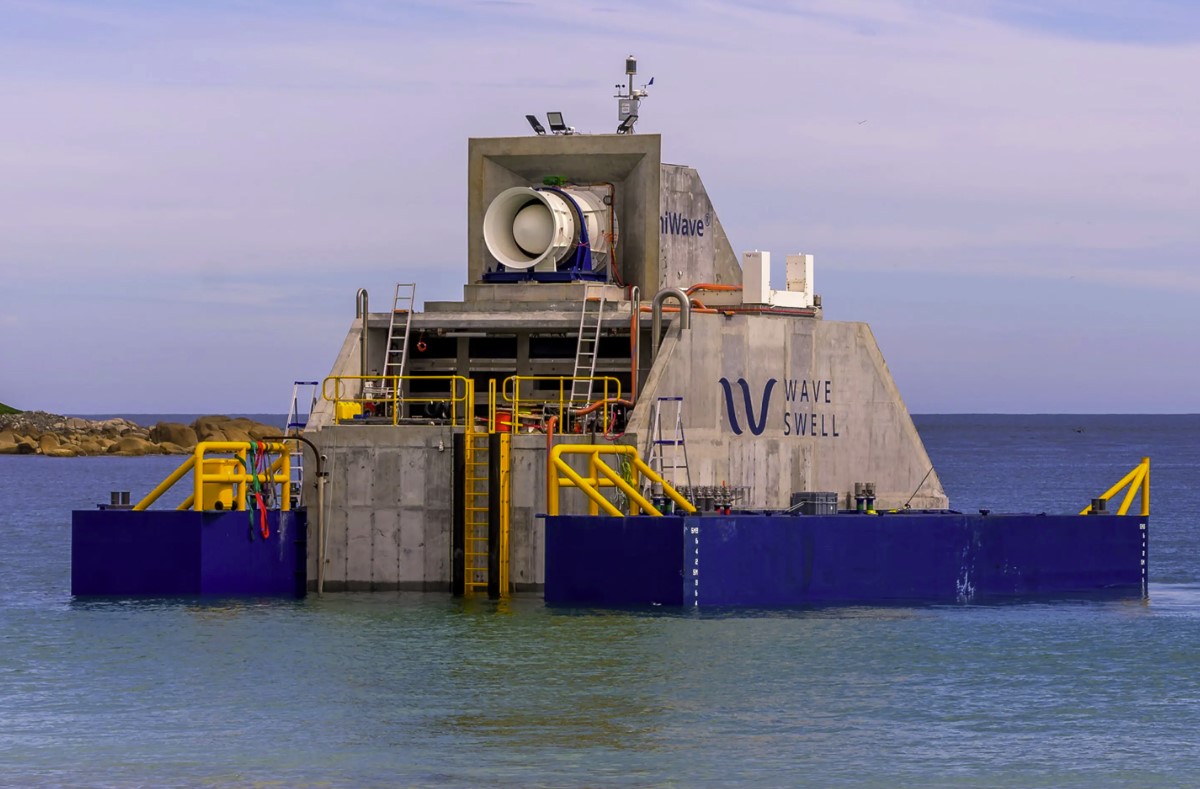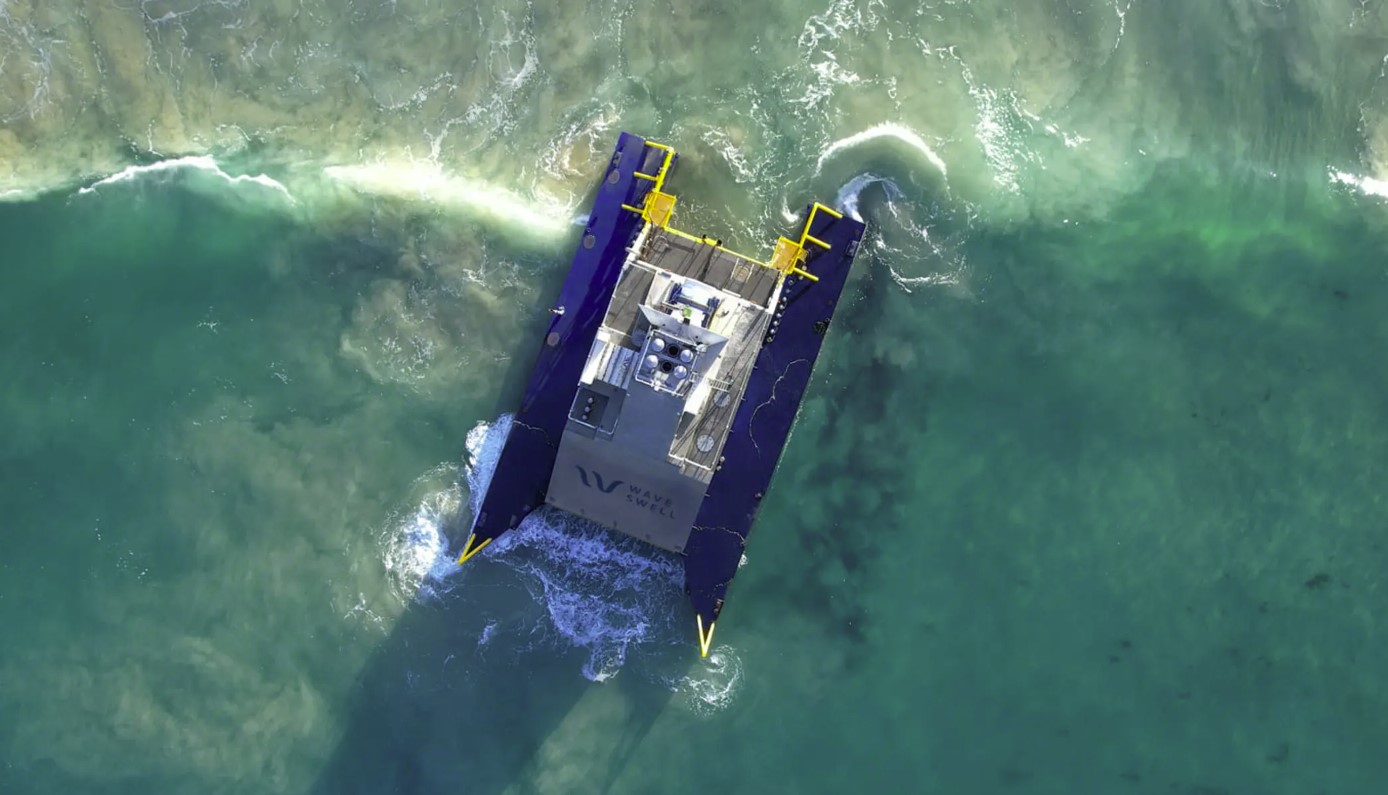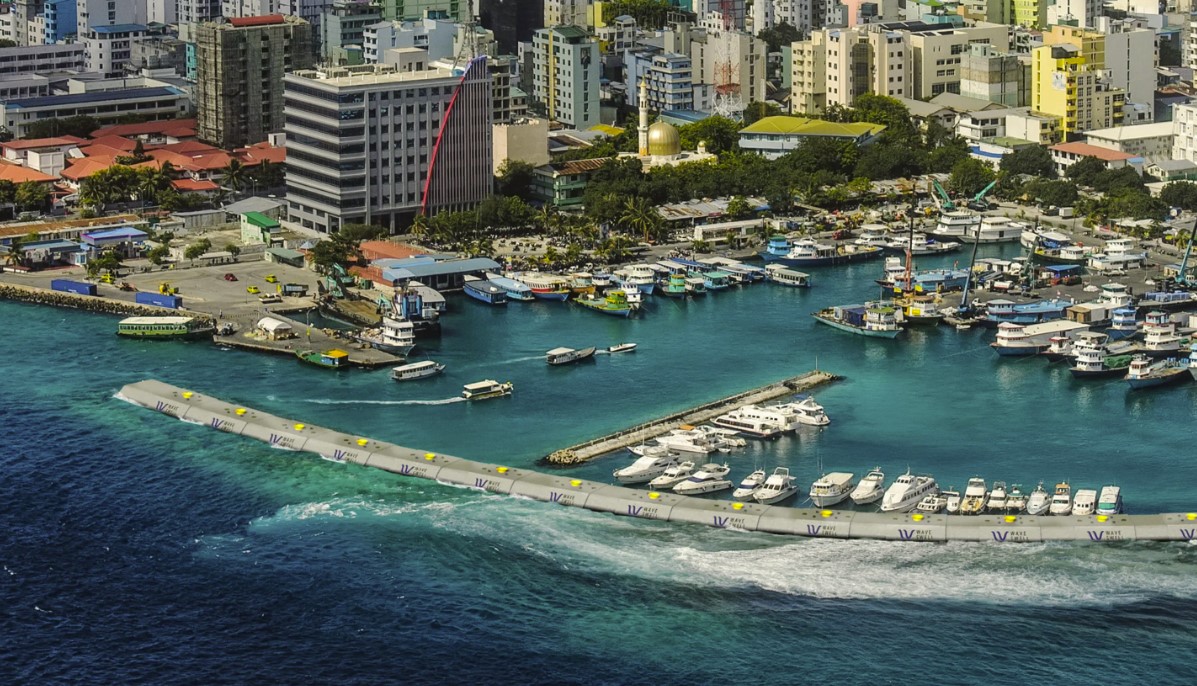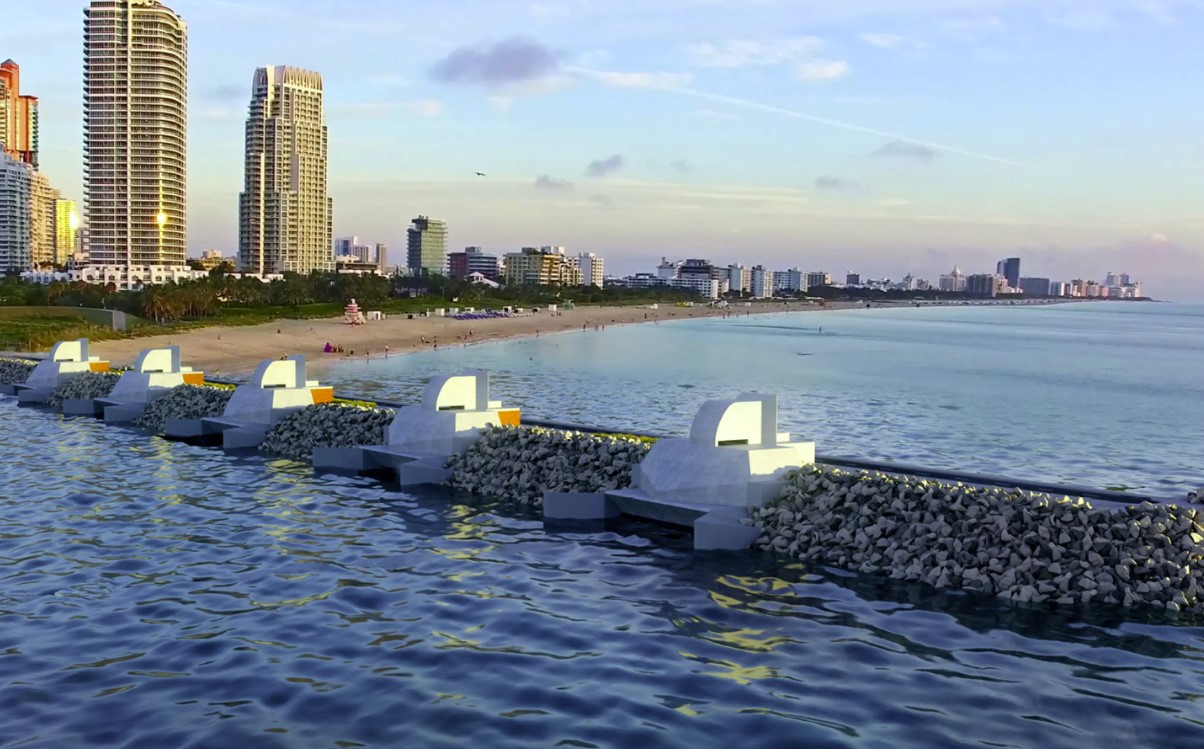Blowhole wave energy generator outperforms expectations

The remarkable UniWave 200 is a sea platform that uses an artificial blowhole formation to create air pressure changes that drive a turbine and provide energy back to land, according to Wave Swell Energy. After one year of testing, the firm claims positive outcomes.

The UniWave system is a floatable device that may be towed to any beach and linked to the local energy network. Water waves push water into a specially built concrete chamber, compressing the air inside and forcing it out through an outlet valve, when the sea recedes. Then, as the water level drops, there is a large vacuum created; this draws in fresh air via a turbine at the top and converts it into electricity that is fed into the grid via a cable. It also absorbs energy from the entire column of water that enters its chamber, which the team claims makes it more efficient than wave energy systems that just gather power from the surface or sea floor.

Other devices that produce the same effect employ bi-directional turbines, requiring the ability to reverse blade pitch or redirect airflow. WSE claims its design allows for far less costly and more compact turbines, which should also last longer since they don't get splashed with as much salt water when a big wave smashes into them. Indeed, all of this gadget's moving components are above the waterline, ensuring that it can operate for a long time without causing harm to marine life. The versatility of the device and its design make it simple to integrate into breakwaters and seawalls, where it may be utilized as a clean energy source in addition to coastal erosion protection.

A 200-kW test platform was put in place last year off King Island, facing the notoriously rough waves of Bass Strait, which separates Tasmania from Australia's mainland. For a whole year, it has provided reliable clean energy to the island's microgrid around the clock. During operation, the WSE staff made several live modifications to the design that improved its performance beyond expectations.
We asked Geason how much energy the device generated during the trial. "It's critical to note that the demonstration on King Island wasn't aimed at generating a large amount of electricity," he adds. "Rather, it was designed to demonstrate the effectiveness of our technology in a range of wave conditions." The results have been excellent, and they've even exceeded our expectations on occasion. When the unit is producing 40 kW of power in acceptable waves, you may calculate that the amount of energy produced is around 1MWh per 24 hours.
The King Island platform will be in position at least until the end of 2022, and the firm is now gearing up to start producing. According to Geason, commercial deployments might differ in size. "The units can scale up to 200 kW," he explains. "The precise size will be determined by the characteristics of the wave climate at any given site. The optimum location, as you put it, will be site specific. We're currently involved with a number of third parties that want to install commercial units, and our efforts and resources are focused on increasing deployments and commercialization of our technology."
Source: newatlas.com